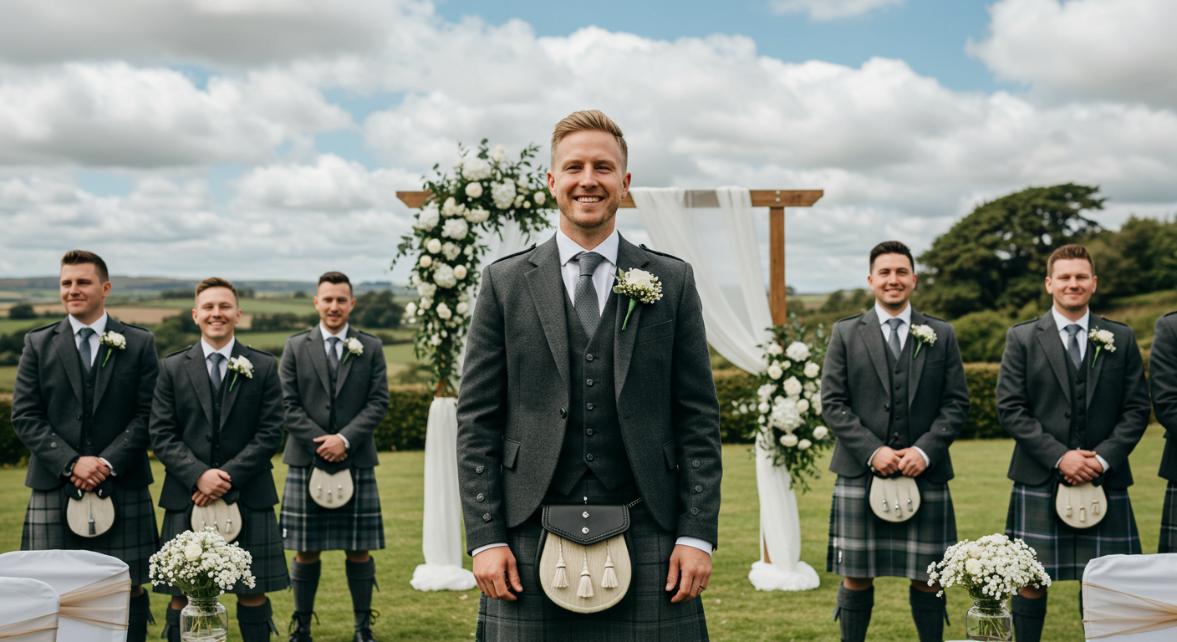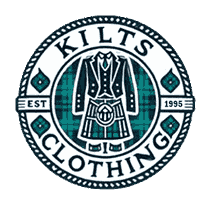The Role of Formal Kilts in Modern Ceremonies: Weddings, Graduations, and Beyond

Once primarily worn in the Highlands of Scotland, Kilts have evolved from a symbol of cultural heritage to a fashionable and meaningful garment in modern ceremonial settings. Today, formal kilts are seen at weddings, graduations, military events, and other special occasions. These timeless garments are more than just a piece of clothing—they represent tradition, pride, and a unique way to express individuality during life's most important moments. This article delves into how formal kilt have seamlessly integrated into modern ceremonies, making a lasting impression.
1. Kilts in Weddings: A Timeless Symbol of Heritage and Elegance
One of the most significant ways formal kilts are embraced today is in weddings. While weddings are typically associated with the classic tuxedo or suit, the formal kilt offers a unique and profoundly personal alternative. Grooms and groomsmen are choosing to wear kilts for their wedding day to honor their Scottish roots and create a striking visual impact that stands out at any ceremony.
For grooms, wearing a formal kilt adds historical elegance to the occasion. The choice of tartan—often a family tartan or one associated with a particular clan—adds layers of meaning and connection to Scottish ancestry. Customizing a kilt with additional details such as embroidered crests, sporrans, or kilt pins enhances the garment's individuality, ensuring the outfit stands out while maintaining a sense of tradition.
Kilts also allow groomsmen to match the groom in a cohesive yet distinctly different outfit from the usual black-tie ensemble. These ceremonial garments can be paired with tailored jackets, waistcoats, or Prince Charlie jackets to add a layer of sophistication and charm to the celebration. Ultimately, the kilt allows for a formal yet unconventional wedding look that symbolizes strength, heritage, and elegance.
2. Kilts for Graduation Ceremonies: Merging Tradition with Modern Achievements
While kilts are traditionally associated with Scottish culture, they have found a surprising place in academic ceremonies, especially graduations. More graduates are choosing formal kilts to celebrate their academic achievements, blending modern success with traditional attire. Wearing a kilt at graduation adds flair to the ceremony. It makes a statement about honoring one's cultural heritage, whether the graduate hails from Scotland or has adopted the garment as part of their identity.
Graduates often select a tartan representing their heritage or institution, making the semi formal kilt a personal and meaningful garment for the occasion. For example, a graduate from a Scottish university might choose a tartan that ties back to their family or university. Incorporating modern elements into the traditional kilt outfit is common, such as pairing the kilt with a contemporary jacket or tie, creating a stylish fusion of old and new.
Beyond the aesthetic appeal, wearing a formal kilt during graduation also emphasizes the values of pride, individuality, and a deep connection to one's past. It's a way to show that achievement is not just about personal success but about staying grounded in cultural and familial traditions.
3. Kilts in Military and Civic Ceremonies: Preserving Tradition in Modern Times
The military has long had a strong connection to formal kilts, and this relationship continues in today's ceremonies. Scottish regiments, in particular, have maintained the tradition of wearing kilts as part of their ceremonial dress. The formal kilt remains essential in military parades, remembrances, and official commemorations, embodying a proud connection to Scotland's warrior heritage.
For military personnel, the kilt is a sign of cultural pride and an essential part of their uniform during state functions, remembrance services, and other ceremonial events. The precision required in the pleating, the correct positioning of fastenings, and the tailored fit all contribute to an outfit that honors history and modern professionalism. The kilt's significance in military settings extends to civic events, such as state visits or national holidays, where Scottish pride is prominently displayed.
In such settings, wearing a kilt is more than just about aesthetics—it is a gesture of respect for history, honor, and tradition. The ritual of dressing in a formal kilt for these occasions links past and present, creating a sense of unity across generations.
4. Kilts in Other Special Occasions: Awards, Banquets, and Cultural Festivals
Formal kilts for sale are increasingly popular in prestigious awards ceremonies, celebratory banquets, and cultural festivals, where their distinctive style enhances the formality and grandeur of the event. While a tuxedo may be the go-to for many, the kilt stands out for its ability to bring a sense of individuality and cultural pride to the occasion.
At banquets and award ceremonies, kilts can be worn by guests or honorees, allowing attendees to break away from the traditional Western formal wear while still adhering to the event's sophisticated atmosphere. The kilt's dramatic flair and timeless appearance can be refined and attention-grabbing, making it perfect for high-profile events.
Cultural festivals, particularly those celebrating Scottish heritage or Highland traditions, have long featured kilts as part of the attire. Events like the Highland Games or other folk festivals often see attendees wearing formal kilts as a tribute to their Scottish roots. Whether worn for celebratory dances, parades, or cultural exhibitions, the kilt enhances the ceremonial atmosphere, bringing a rich visual element to the festivities.
5. Choosing the Right Formal Kilt for Different Ceremonies
Selecting the appropriate kilt for each type of ceremony is crucial to ensure the wearer remains comfortable while maintaining the event's formality. For weddings, traditional tartans or clan-specific patterns are often chosen. At the same time, graduates may opt for colors representing their academic institution or a more personal tartan for graduation ceremonies.
When attending events like military or civic ceremonies, it's essential to select a kilt that aligns with the protocol of the occasion. Ensuring that the kilt is complemented by the appropriate accessories, such as a military-style kilt pin or jacket, enhances its ceremonial value in these settings.
Comfort is another critical consideration—kilts should fit well, not just for aesthetic reasons but also to ensure the wearer can participate in the ceremony without discomfort. It is essential for long ceremonies or events that require extended standing or movement.
6. The Modern Evolution of Formal Kilt Accessories
Accessories have become a significant part of the modern formal kilt ensemble. Sporrans (decorative pouches worn at the waist), kilt pins, belts, and jackets contribute to the kilt's overall elegance and functionality. These accessories serve both practical and aesthetic purposes, with each item adding a layer of sophistication to the garment.
Modern sporrans can be customized with various materials and designs, from simple leather to more elaborate fur or metal finishes. Kilt pins are typically used to secure the front of the kilt while also serving as a decorative piece. In formal settings, the choice of traditional or contemporary accessories can add an extra touch of refinement to the kilt.
7. Cultural and Social Impacts of Wearing Formal Kilts Today
In a globalized world, kilts have become more than just a Scottish garment—they have become a symbol of cultural identity and pride for people worldwide. Kilts are increasingly worn at non-Scottish weddings, international events, and multicultural celebrations, adding diversity and richness to modern ceremonies.
Wearing a kilt allows individuals to connect with their heritage, even if they aren't directly descended from Scottish ancestry. People often choose kilts to honor a sense of cultural connection or to stand out at a formal event. As more people from various backgrounds adopt kilts, their presence in ceremonial contexts has broadened, enhancing the inclusivity of modern celebrations.
Conclusion: A Lasting Tradition in a Modern World
Formal kilts are significant in modern ceremonies, from weddings and graduations to military and cultural celebrations. Their ability to blend tradition with contemporary elegance makes them a timeless choice for life's most important moments. Whether worn to honor one's heritage, add a personal touch to an event, or stand out from the crowd, the formal kilt remains a cherished garment representing pride, dignity, and connection to the past.
By embracing the kilt in modern ceremonies, we ensure that this beautiful tradition endures, bridging generations and cultures in meaningful and visually striking ways.


